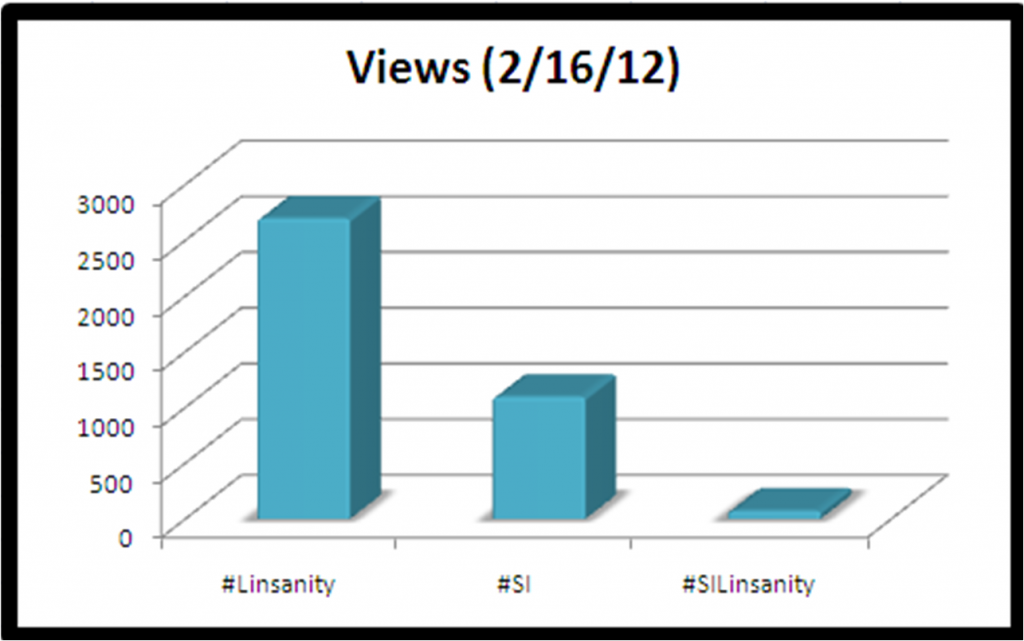Smashtags: Social Media Momentum Killers
Smashtags are destroying your social media momentum–and you might not even know what they are.
What is a smashtag?
A smashtag (patent pending*) is the combination of multiple words, topics, or subjects resulting in one long hashtag.
Awful examples:
#CocaCola2012Olympics
#TideBleach
#CapitalOneCupChampionship
#TylerAltrupIsAGenerallyGoodDude
Today’s Example: #SILinsanity
Instead of using #SI for Sports Illustrated along with #Linsanity for a reference to the Jeremy Lin craze sweeping the NBA, the sports magazine stalwart tried to smash them together.

(Almost) Never Start a Conversation from Scratch
So what, exactly, did Sports Illustrated do wrong? In short, everything.
Stop for a moment and ask yourself–what is the goal of using a hashtag? I would argue that the goal of using any hashtag, seriously or humorously, is to join in on an existing conversation or to start one. The former goal, finding and joining existing conversations, is straightforward and rewarding. The later goal, attempting to create a global narrative from scratch, is extremely difficult and strongly discouraged.
Failing to Define Goals or Meet Objectives
Back to the example: #SILinsanity
Sports Illustrated slapped this awful smashtag into a promotional video for a recent cover and failed to meet either of its probably objectives.
Let’s assume that SI had two objectives:
Objective 1: Promote the Sports Illustrated brand
Objective 2: Attach the brand to the Jeremy Lin craze
In a perfect world, I would have suggested that the brand make sure to use both #SI and #Linsanity in any promotion related to this cover. If they had done so, they would now be a searchable part of two massive conversations–one about Sports Illustrated and one about Jeremy Lin.

Instead, they failed to understand conversational mechanics and went with #SILinsanity, a conversation less than 1% of the size of the previous two.
Proof in the #Data #Pudding
Let’s take a look at some proof, delivered via simple Twitter hashtag data. These counts were pulled from the single-day data of Thursday, February 16. Over time, the results are even more pronounced.
#Linsanity: 2696
#SI: 1095
#SILinsanity: 72
Want more proof? How about a four-day track–see below for hashtag use from February 16-February 19.
I’d say that answers that question. The counts clearly illustrate the issue–#SILinsanity–despite broad promotion, simply does not have the social conversational traction of #SI and #Linsanity.
If You Build It, They Will NOT Come
The fundamental problem with hashtags is that a user will almost never go looking for them–or for whatever effort you have attached to them. If I want to see more from Sports Illustrated, I will search the full name or SI. If I want to find out about the craze surrounding the New York Knicks point guard, I will search for Jeremy Lin or Linsanity.
Users searching for any mix of these terms will completely miss #SILinsanity.
Smashtags do not work, they are not effective, and good social strategy requires that we change course by returning to our goals and objectives–and building a social communication plan that matches them.

*Not really
Leave a comment



[…] magazine missed a whopper of a Twitter conversation surrounding last winter’s craze around NBA player Jeremy Lin. Already (and still) swirling tweets at #Linsanity clearly outpaced the forced conversation SI […]
Hashtag, smashtag, bashtag, cashtag | Listen Completely
August 3, 2012
[…] Based on real numbers provided by an example above, you can see this doesn’t work well for adoption. My former colleague hilariously calls this choice a smashtag, which he shows as ineffective here. […]
Hashtagger’s Dilemma: What the Prisoner’s Dilemma Teaches You About Hashtags | I Tech, Therefore I Am
October 6, 2013
[…] magazine missed a whopper of a Twitter conversation surrounding last winter’s craze around NBA player Jeremy Lin. Already (and still) swirling tweets at #Linsanity clearly outpaced the forced conversation SI […]
Hashtag, smashtag, bashtag, cashtag
January 3, 2014